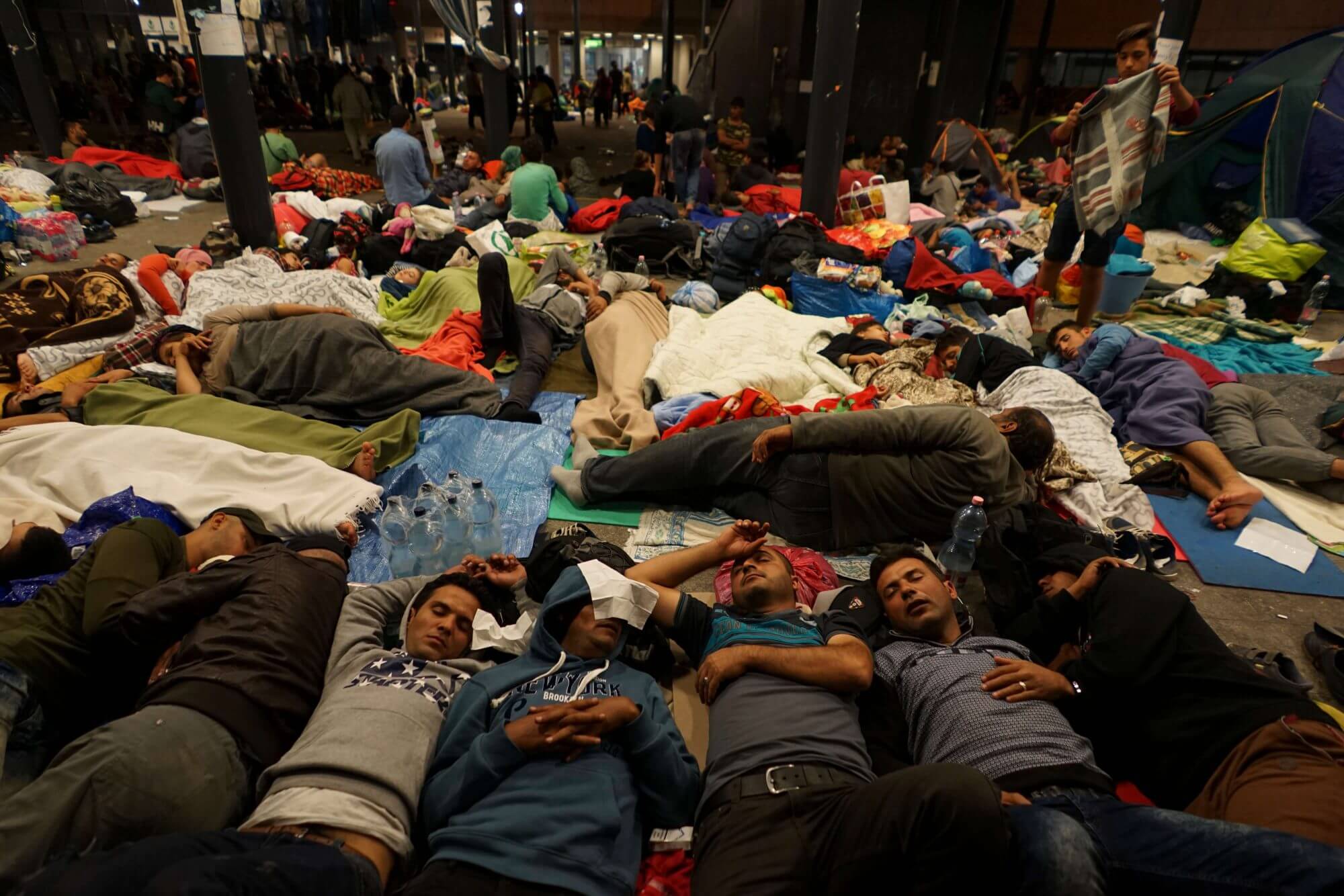WASHINGTON — Negotiations underway in Switzerland may bring peace to Syria, but the refugee crisis caused by the five-year civil war could threaten the stability of its neighbors in the Middle East. The U.S. is the largest provider of humanitarian aid, but some critics say the American response isn’t enough to keep the region from falling apart.
Tuesday marked the fifth anniversary of the beginning of the conflict that has left over 11 percent of the Syrian population dead and caused one of the largest humanitarian crises in recent history. With more than 4.8 million people registered with the UN High Commissioner for Refugees, Syrians now make up the world’s largest refugee population.
Many refugees relocated to camps in neighboring Turkey, Jordan and Lebanon, and hundred of thousands more have fled to Europe.
President Barack Obama committed to admitting 10,000 Syrian refugees to the U.S. and spent $5.1 billion on aid to the refugees and their host countries through fiscal 2015.
Some critics, like Robert McKenzie, a Middle East policy expert at the Brookings Institution, think the government is capable of doing far more than Obama’s plan.
In 1975, more than 120,000 Vietnamese refugees were admitted to the U.S., despite the fact that only 36 percent of Americans favored the resettlement. According to McKenzie, this undertaking was only possible because the Ford administration made it a top priority, and he doesn’t expect Obama to take significantly increase the number of admitted refugees. Polls show that 60 percent of Americans don’t want any refugees coming into the country.
In fact, 31 governors said they would deny Syrian refugees entry to their states because they don’t think the refugees will have been screened sufficiently.
But Simon Henshaw, an official in the State Department’s Bureau of Population, Refugees, and Migration, said Syrian refugees receive the most thorough screenings of anybody entering the country. Most are from vulnerable populations — women, families with children, victims of torture.
“The refugees we resettle in the US are victims of terrorism … victims of more horror than [Americans] can imagine,” Henshaw said. ”They want to go home. They don’t want to be here.”
Click here for an outline of the U.S. vetting process.
Still, resettlement may not be the best way for the U.S. to address the refugee crisis. Many experts believe providing humanitarian aid and stopping the flow of refugees out of Syria will do much more to take pressure off refugee-inundated countries than relocating a relatively small handful of refugees across the Atlantic.
“The numbers, even when they’re talked about, are so minuscule they have no impact on the actual size of the refugee problem we’re talking about,” said Paul Salem, vice president for policy and research at the Middle East Institute. “If the U.S. manages to bring in 10,000 or 15,000 or 20,000 … it really is a tiny drop in an ocean.”
The U.S. humanitarian aid combined with donations from other countries hasn’t solved the crisis, but Henshaw said it has relieved some of the pressure on host countries, funding education initiatives, social services and other financially strained areas.
Maya Berry, executive director of the Arab American Institute, said that providing foreign aid is one of the most effective ways the United States can address the refugee situation. Though the scale of the crisis makes it seem like there’s always more to be done, Berry said, the role of American assistance thus far should not be downplayed.
“I don’t think any country can make the case that we haven’t stepped up and assisted in terms of aid and assistance programs,” she said. “In terms of our allies and our ability to help with the international community piece, it’s been tremendous.”
Despite America’s efforts, Western Europe and host countries in the Middle East still bear the brunt of the responsibility, and road ahead doesn’t look much better.
Over 350,000 Syrian refugees flooded into Europe in 2015, 2.7 million people are camped along the border in Turkey, and the crisis poses the threat of destabilizing Syria’s southern neighbors, Jordan and Lebanon.
Both countries have relatively small populations, so the massive wave of newcomers has been difficult to accommodate. Jordan, a nation of 6.5 million, has taken in more than 600,000 refugees, and in Lebanon, Syrian refugees now make up about a quarter of the 4.5 million population. That’s the equivalent of 80 million people suddenly entering the United States.
Both countries have absorbed large Palestinian and Iraqi refugee populations, and with the influx of displaced Syrians spreading resources even thinner, Jordan and Lebanon are threatened with civil unrest.
According to Michael Rubin, a former Pentagon official and scholar at the conservative American Enterprise Institute, the influx of Syrian refugees has placed a huge burden on Jordan, distorting housing prices, undercutting the minimum wage and warping other economic factors.
If left unchecked, he said, the situation could threaten to destabilize the one of America’s chief allies in the Arab world and create “a whole different ballgame” for U.S. national security.
The situation in Lebanon looks even worse. With the government in Beirut already on shaky ground, the unprecedented number of refugees could reignite sectarian violence that’s brewed beneath the surface since the country’s 15-year civil war.
Berry recently traveled to Lebanon, where she witnessed firsthand the toll the refuges have placed on the country — high unemployment, garbage in the streets and hundreds of thousands of kids out of school.
“If you can’t provide services for your population, that’s certainly one way to destabilize things,” she said. “The sheer mass of humanity is so large here that you can’t help but to worry about what impact it has.”


